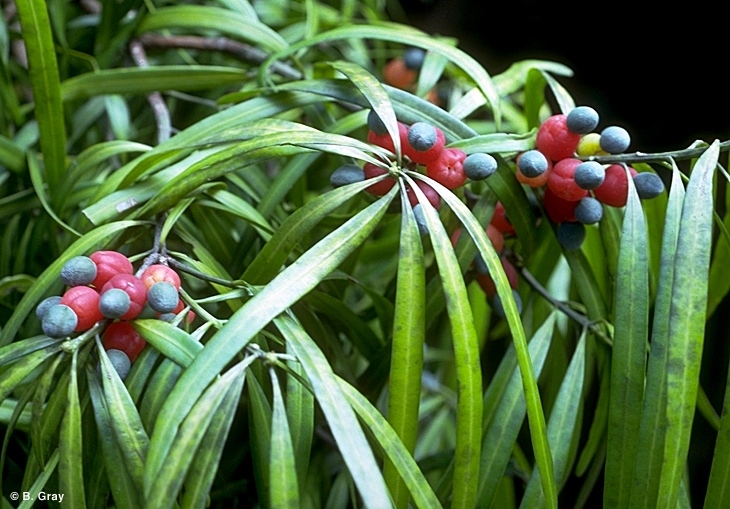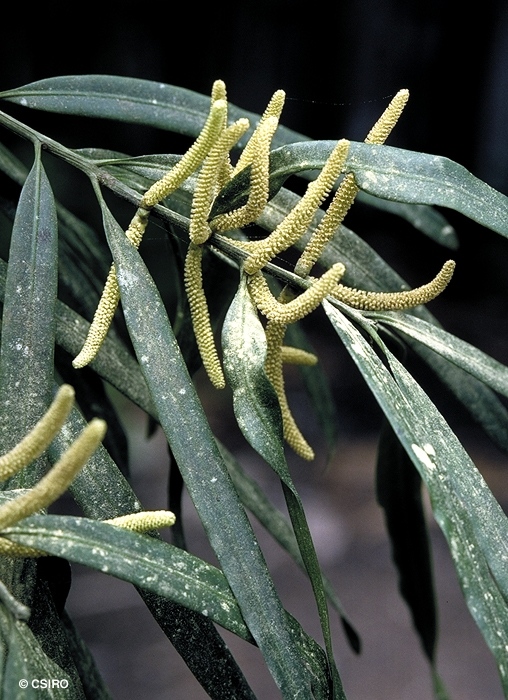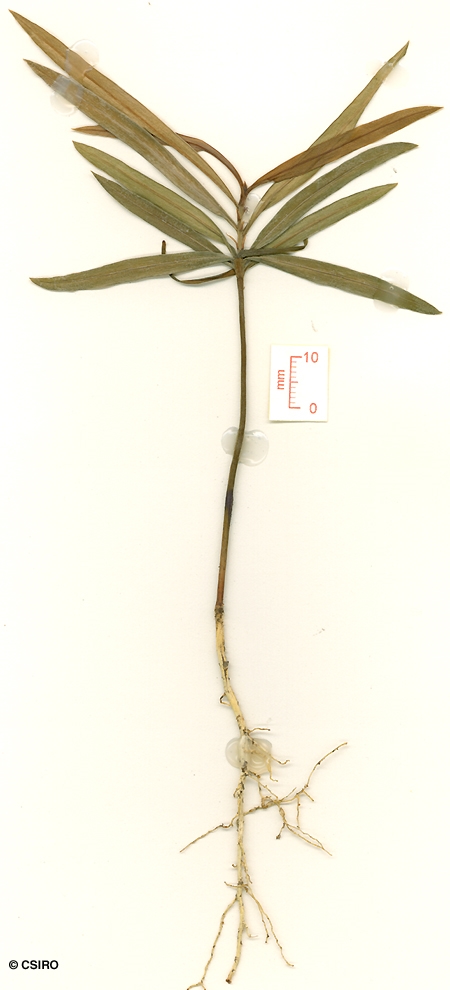Australian Tropical Rainforest Plants - Online edition
Podocarpus grayae de Laub.





Laubenfels, D.J. de (1985) Blumea 30: 275. Type: Brass 20203 (holo, L; iso A, BRI, K), Annan R., Cape York, N. Queensland.
Pine, Brown; Pine, Northern Brown; Northern Brown Pine; Brown Pine; Weeping Brown pine
Living bark very strong and fibrous. Blaze finely layered and dead bark layered.
Male cones about 20-60 x 3-5 mm. Peduncle nil or up to 1 mm long. Cones usually in clusters of about 1-4. Microsporophylls about 1.5 mm long.
Receptacle large and fleshy, about 15-18 x 16-17 mm, red when the fruit is ripe. Fruits about 10-16 x 7-12 mm. Seeds about 9-14 x 6-9 mm.
This species makes a fine potted plant for indoors.
The timber of this species is useful and can be used for much the same purposes as Prumnopitys amara. Swain (1928).
Wood specific gravity 0.55. Cause et al. (1989).





